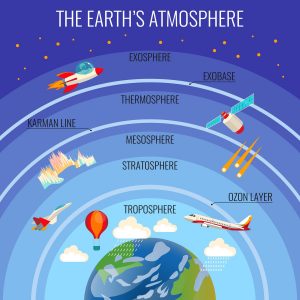Karman Line:

On July 11, British businessman Richard Branson beat rival Jeff Bezos to reach the edge of space, giving space tourism an official kickstart. But experts and space enthusiasts are in doubt whether the height to which he travelled can be termed ‘space’.
- The most widely accepted boundary of space is known as the Kármán line, 100km above mean sea level. But the United States uses 80km as the cutoff point. Branson’s Virgin Galactic flight reached a height of 86km while Jeff Bezos’ Blue Origin flight is expected to go about 106km high.
- The Kármán line has been compared to international waters, as there are no national boundaries and human laws in force beyond the line. Above this level, there would be free space.
- It was named after aerospace pioneer Theodore von Kármán
- The 1967 Outer Space Treaty says that space should be accessible to all countries and can be freely and scientifically investigated.
- Defining a legal boundary of what and where space is can help avoid disputes and keep track of space activities and human space travel.
- The Earth’s atmosphere has been divided into various layers, with the troposphere starting at the Earth’s surface and extending about 14.5 km high, stratosphere extending to 50 km, mesosphere to 85 km, thermosphere to 600 kilometers and exosphere to 10,000 km.




